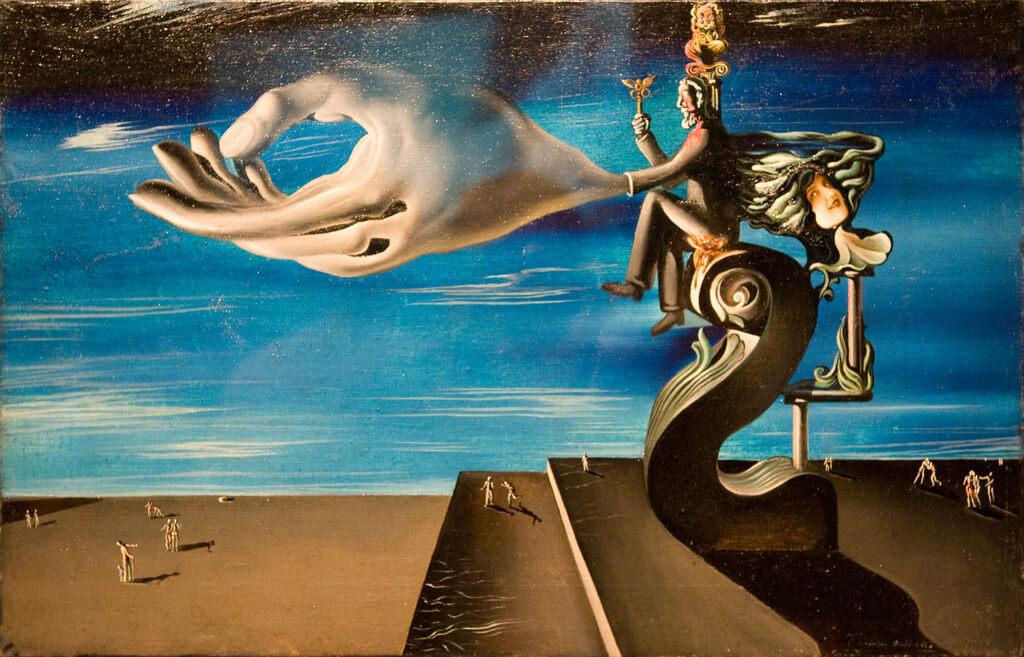Surrealism (surrealist art) is a well-known and misunderstood artistic style, this style was a revolution in the arts, its origins are in the literary world, although its best-known expressions are in the work of some great masters such as Salvador. Dali.
It is an illogical art, meaningless and full of fantastic motifs, and it also tried to capture the world of dreams and the unconscious, so it was also known as the art of dreams.
- It is the aesthetic movement that has become most interested in making a representation of the human psyche and the unconscious.
- His work seeks to confront the individual with his most complex thoughts.
- In this way surrealist art was much more than a visual beauty.
- It aimed to free man from everything that was rationally understood and take him to fantastic worlds.
- Worlds full of symbols and meanings that have connected you to your?I? Deeper in.
“With psychoanalysis, doctors have begun to take an interest in people’s souls, but artists have been doing it for a long time. “S. Freud-
“Geniuses do not have the right to die because they are necessary for the progress of humanity. ” Salvador Dali-
He was one of those geniuses, deeply admired for his works and widely criticized for his eccentric and narcissistic, visionary and mystical nature. It’s hard to know where the genius ended up and where the madman started.
He was not a psychotic, but he had paranoid tendencies, and one of the most common defense mechanisms in this type of disorder is projection, that is, the fears and thoughts themselves are unconsciously attributed to someone or something, this painting genius had the incredible ability to project his inner reality outward.
In the 1920s, he read Freud’s work, “The Interpretation of Dreams,” a reading that marked it deeply and entered a new artistic phase, invented what he called the paranoid critical method with which he intended to reach and shape subconscious information.
“I must be the only one of my kind to dominate and transform creative power, glory and joy, a serious mental illness. “Salvador Dali-
The most widely used pictorial technique in surrealist art was automatism, probably inspired by free psychoanalytic association. The surrealists used automatism as an inner mirror, a reflection of the unconscious. Many argued that automatism was not a technique in itself, but an artistic movement.
“Surrealism is pure psychic automatism, through which you try to express verbally, graphically or in any other way the actual functioning of thought. ” – André Breton-
In Dala’s inner world, full of symbols, fetishes, sometimes impossible objects, have proliferated for those who liked to make room in his works and whose interpretation was not always consensual among the specialists.
They highlighted characters such as the Lobster, which was one of Dalí’s obsessions throughout his life and which seemed represented as a source of phobias, the drawers, a symbol of the secrets of the mind that only psychoanalysis could open, skulls as a symbol of the fleetingness of life.
Butterflies as a symbol of metamorphosis and transformation; flies, which seem to represent fear; the crutch, which for Dala represented authority, magic and mystery; eyes, which referred to the observer. Or molten clocks, one of Dala’s best-known symbols, represent the passage of time and its lack of relevance.
“The symbolic language of the subconscious world is the only truly universal language common to all men. “- Salvador Dali-
Dala’s genius has often coined his own terms to define pictorially (through painting) the concepts of psychoanalysis such as the complex of dioscuros, which he called “phenixology”, a symbolic process by which one of the brothers must die for the other to become immortal. He tried to symbolize the Oedipal desire or the power of the father.
Salvador Dalí sought in psychoanalysis an explanation of the obsessions that accompanied him throughout his life, and did not find in his art only a way to analyze his own conflicts in the manner of psychoanalytic schools, but also invented an imaginary world to reflect it in his works.

